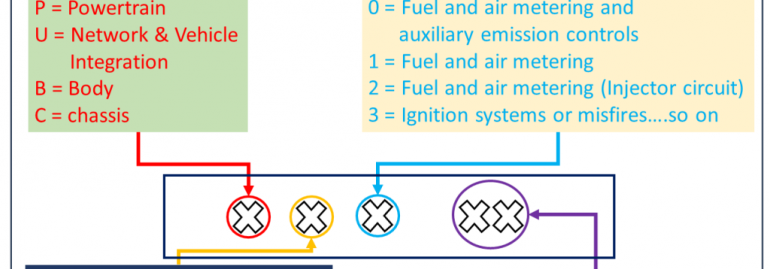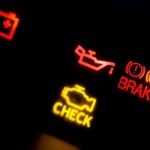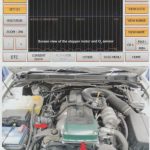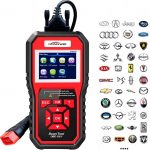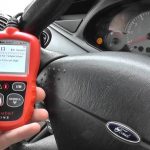
If your check engine light comes on, you may be wondering what it means. Well, obd dtc codes are one way to narrow down the causes of this warning light. These codes are used by the onboard diagnostics system, otherwise known as OBD, to identify specific problems in a vehicle. Read on to learn more about DTC codes and how they can be used to identify the cause of a check engine light.
OBD2
OBD2 DTC codes are a type of diagnostic trouble code for your car. These codes are specific to a particular car model. If you encounter one of these codes, you should know the correct way to diagnose the problem. In order to diagnose on-board diagnostics, you need to know the right tools and techniques. There are several ways to troubleshoot an OBD2 code. Listed below are a few of them.
A Bluetooth OBD2 scanner will usually have an APP bundled with it. Some may be just an inexpensive chip, while others include a bundled app. The bundled apps are usually more convenient and offer better customer support. They can also come with additional features. For example, the P-code stands for “Powertrain,” and it includes emissions, engine, and transmission. Other codes are in pairs, and 00-99.
OBD2 DTC codes have several levels of complication. The first three digits are generic codes, while the last two indicate the specific fault designation. This information can help you determine what’s wrong with your car. Some codes are more serious than others. If you suspect a faulty component, you should get your vehicle fixed. But, if you are not a technician, an OBD scanner may not be as helpful.
In most cases, an OBD2 DTC code has the same name as the vehicle model. The first digit is the manufacturer, and the second digit is the generic code. Depending on what system is reporting a fault, you may get a code that has two or three digits. Some codes may be related to air pollution or emissions. However, there are also generic codes that are not specific to any specific car model.
If you’re an expert mechanic, you will know the differences between a diagnostic tool and an OBD2 scanner. The main difference is that the latter can be used to reset the check engine light. However, before you can drive with an OBD2 scanner, you should disconnect it from the vehicle. This is because the codes can be inaccurate. In some cases, the OBD2 scanner will reveal a different fault code than the one you’re receiving.
P-codes
If you want to repair your car, you should know how to diagnose and fix OBD DTC codes. These codes are not difficult to identify and they are easy to learn. If you’re having a hard time figuring out what these codes mean, you can learn about them using an online tutorial by nonda Auto DIY Center. They have produced videos about the most common DTC codes.
The problem is described by a two-digit number, which can range from 0 to 99. Each character gives an exact description of the problem. For example, a P0219 code indicates a problem with the powertrain. The first character in this code is a generic number (0), while the second character indicates the problem is related to the air and fuel metering system. The last two digits of the code (19) define the problem as an over-speed condition.
OBD-II diagnostics systems are a modern way to diagnose problems in your vehicle. A P-code means that your vehicle is experiencing a malfunction in a certain part of its system. This code is used to determine which parts of the vehicle need repairs. If the problem is a simple one, then you can solve it yourself. If you’re unsure of which code your car has, it’s best to consult your owner’s manual.
Traditionally, the first digit of a diagnostic trouble code indicates which sensor is causing the problem. However, modern cars are equipped with a system that uses a network of sensors, which allows for greater precision and fewer errors. In fact, many OBD-II systems use the same diagnostic codes, so the first digit of the code indicates whether it’s a generic code or a manufacturer-specific one.
Often, DTCs are activated by problems that will cause the car to malfunction in the future, but you can also use them to understand a specific problem. For example, if your MAF sensor is misfiring, you might be getting an OBD-II trouble code that says that the car’s fuel mixture is not correct. By using an OBD-II scanner, you can learn more about these codes and determine what’s causing it.
EVAP systems
If your EVAP system is malfunctioning, it’s essential to diagnose the code to prevent further damage to the car. This code is usually triggered by another EVAP system code. For example, if your EVAP system is malfunctioning, you might also see codes related to the purge valve or vent valve, or the fuel tank pressure sensor or leak detection pump.
The EVAP system monitor is a diagnostic device that allows the PCM to test the fuel system for vapor leaks. The PCM activates this sensor during purge operation of the canister. It also activates its leak detection portion when the vehicle is running under normal conditions. The PCM also tests all electrical components of the EVAP system for rationality and electrical faults.
Modern vehicles are equipped with systems that help minimize emissions by directing fuel vapors into a charcoal canister. Once the canister is full, a purge control valve opens and the vapors enter the engine, where they burn off, reducing overall emissions. However, there are leaks in the EVAP system, and fuel vapors can escape before they are able to incinerate in the engine. If this happens, the OBD system alerts you to the problem.
To determine if your EVAP system is malfunctioning, you should check your car’s obd dtc codes. EVAP systems have a range of trouble codes from 0440 to 0457. Troubleshooting EVAP system trouble codes is important for proper vehicle maintenance. Troubleshooting requires a step-by-step system diagnosis. It’s best to consult a qualified automotive technician to determine what’s wrong with your car.
While EVAP system fault codes may be triggered by a number of problems, they can also be caused by a malfunctioning EVAP monitor. If the EVAP system is faulty, a technician can perform an inspection to identify the problem. For example, they will check the live fuel pressure data of the fuel tank, as well as the gas cap, purge valve, and vacuum switch to ensure the system is working properly.
Diagnostic trouble codes
If your car is experiencing problems, you’ve probably noticed that it has a lot of “DTCs” (diagnostic trouble codes). These are codes recorded by your car’s onboard diagnostics system. The codes are five characters long and refer to thousands of different faults and problems. If your vehicle displays more than one code, you should start with the higher one. Lower codes can indicate symptoms of a higher DTC.
The obd-II code consists of 5 characters. Each letter represents a particular problem. For example, a “9” would indicate a problem with the transmission, while an “8” could mean a sensor failure. To determine which one your car has, you must first understand what each of the five-character codes means. Usually, you’ll find the problem code in the engine or transmission.
To read a DTC, you will need an OBD-II scanner that has a 16-pin connector. Depending on your car model, some will require you to enter the vehicle’s model and year. Other devices will display a list of DTC faults in numerical order and a definition of each. Most readers have Bluetooth compatibility and will allow you to transfer the data wirelessly. You can even connect your scanner to your computer to read the DTC.
There are many ways to interpret an OBD2 code. You can use a scan tool to retrieve the codes. Using a tool like TOAD-Scan will help you to find specific trouble codes. You can also use a tool that recognizes more than 5000 OBD2 Trouble codes. A scan tool will allow you to select and save the code that most closely matches your vehicle. Once you have the code, you can proceed to troubleshooting.
In addition to OBD II, the diagnostic system on today’s cars is more advanced. This means that they can tell you what the problem is. The onboard diagnostic system stores fault codes. Scanners can read these codes. These codes follow a simple formula and begin with a letter that indicates which part of the car is at fault. If you know what type of trouble code your car is showing, you can eliminate the problems as quickly as possible.


